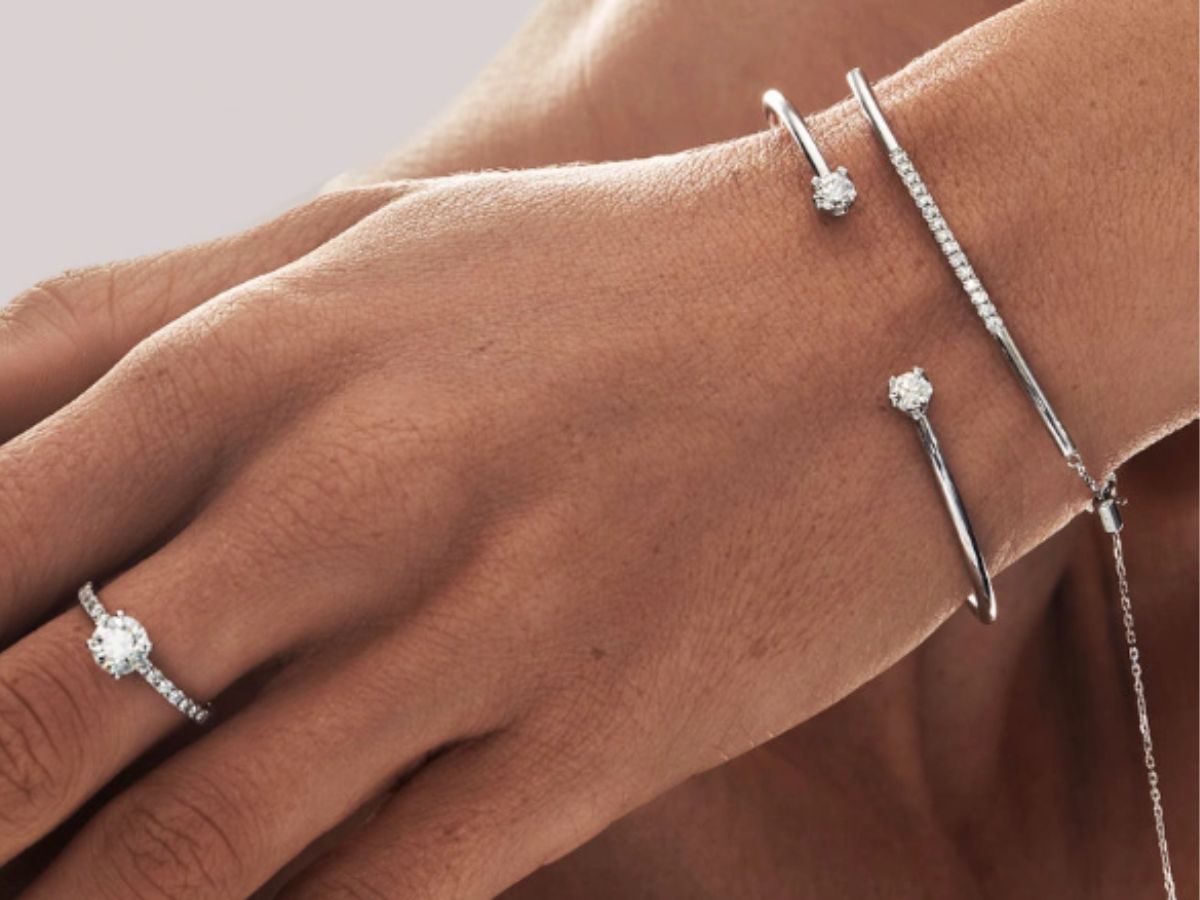Rhodium plating is one of those hidden details that can make a big difference in jewelry. Whether you’re shopping for a new sterling silver necklace or upgrading an engagement ring, this thin layer of metal determines how bright, durable, and hypoallergenic your piece will be. Many fine jewelry brands like YFN Jewelry use rhodium plating not only for its shine but also for the extra protection it provides.
What Is Rhodium Plating?
Rhodium is a rare, precious metal from the platinum family. It’s bright white, naturally resistant to corrosion, and highly reflective. Because solid rhodium is too expensive and brittle to use on its own, jewelers plate it onto other metals—most commonly sterling silver, white gold, or even platinum.
The plating process uses electricity to bond a micro-thin layer of rhodium to the jewelry’s surface. This layer, though usually only 0.1 to 0.5 microns thick, dramatically changes the piece’s appearance and performance.
Key Benefits of Rhodium Plating
- Brighter, Whiter Shine
Rhodium plating gives jewelry a mirror-like finish that’s brighter than standard silver or white gold. This is why even high-end platinum pieces often have a rhodium layer.
- Tarnish and Corrosion Resistance
Sterling silver naturally oxidizes over time, causing dullness or dark spots. Rhodium prevents this reaction, helping your jewelry stay bright and polished for years.
- Enhanced Durability
Though thin, rhodium is harder than both gold and silver. It forms a protective shell that resists scratches and everyday wear, making your jewelry more durable in the long run.
- Hypoallergenic Surface
For people with sensitive skin, rhodium plating is a game changer. It creates a barrier that reduces direct contact with metals like nickel, minimizing allergic reactions.
How Long Does Rhodium Plating Last?
The durability of rhodium plating depends on how often you wear the piece and how thick the coating is. On rings or bracelets worn daily, plating typically lasts 1 to 2 years before it starts to thin. Necklaces and earrings, which experience less friction, can stay plated much longer.
When the shine fades or yellow tones appear, it’s a sign that the rhodium layer is wearing off. Replating is simple and relatively affordable, and many jewelers offer this service.
Rhodium Plated vs. Sterling Silver: What’s the Difference?
| Feature | Rhodium Plated Jewelry | Sterling Silver Jewelry |
| Appearance | Brighter, whiter, mirror-like finish | Slightly warmer silver tone |
| Maintenance | Low – resists tarnish and scratches | High – requires regular polishing |
| Durability | Higher – protective coating | Lower – prone to oxidation |
| Cost | Slightly higher | More affordable |
If you want silver jewelry that stays bright with minimal maintenance, rhodium plated silver is worth the small extra cost.
When Rhodium Plating Is Worth It — and When It’s Not
Worth it:
- Everyday rings, bracelets, and necklaces you wear often
- Engagement rings or sentimental jewelry pieces
- Jewelry meant as long-term gifts or heirlooms
Not always necessary:
- Trend pieces or low-cost fashion jewelry
- Items that will be replaced quickly
For jewelry you plan to keep and wear for years, rhodium plating offers a strong balance of beauty, durability, and practicality.
Care Tips for Rhodium Plated Jewelry
- Clean gently: Use a soft, lint-free cloth. Avoid abrasive cleaners.
- Avoid chemicals: Perfume, lotion, and household cleaners can wear down the plating.
- Store properly: Keep jewelry dry and separated in a soft pouch or box.
- Know when to replate: If the shine dulls or the underlying metal shows, it’s time for a fresh layer.
Why Many Quality Brands Use Rhodium Plating
Even non-luxury jewelry brands use rhodium plating on their sterling silver and gold pieces to enhance value and longevity. A well-crafted rhodium plated piece can match the look and feel of much more expensive jewelry — often at a fraction of the price. This makes it an ideal choice for buyers seeking premium quality without overpaying for a name.
